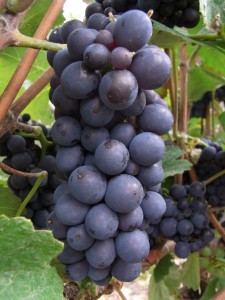 Grenache, whose origin points to Aragon in northern Spain, is the most widely cultivated red varietal throughout the world. The wine’s propensity for vigor, drought resistance, high alcohol, and inherent ability to yield powerful, spicy, complex wines has made it a favorite in warm climates around the world. When judiciously pruned, Grenache yields wines of extraordinary quality, not only in Spain’s Priorat where it is known as Garnacha, and in neighboring France (including the Languedoc and the Rhône Valley where it shines in all the greatest wines of Gigondas, Côtes de Rhône villages, and Châteauneuf-du-Pape, which includes Château Beaucastel, the southern Rhône’s most iconic wine), but also in Australia. It is the most cultivated red grape in Australia where the country’s very old bush vines, many of which are in excess of 100 years of age, furnish some of South Australia’s most extraordinary reds. Thistledown is currently Australia’s leading purveyor of old bush vine Grenache, and Thistledown’s wines should not be missed. Every one of Thistledown’s Grenache offerings constitute the benchmarks by which others are judged. Grenache also forms the basis for Australia’s signature GSM blend, perhaps the world’s most recognizable blend. California enjoys a long history with Grenache, too, where it increasingly plays a supporting role in the state’s finest Syrah offerings. It is high time that we pay homage to the planet’s most prolific red grape variety and the extraordinary, crowd pleasing wines it yields.
Grenache, whose origin points to Aragon in northern Spain, is the most widely cultivated red varietal throughout the world. The wine’s propensity for vigor, drought resistance, high alcohol, and inherent ability to yield powerful, spicy, complex wines has made it a favorite in warm climates around the world. When judiciously pruned, Grenache yields wines of extraordinary quality, not only in Spain’s Priorat where it is known as Garnacha, and in neighboring France (including the Languedoc and the Rhône Valley where it shines in all the greatest wines of Gigondas, Côtes de Rhône villages, and Châteauneuf-du-Pape, which includes Château Beaucastel, the southern Rhône’s most iconic wine), but also in Australia. It is the most cultivated red grape in Australia where the country’s very old bush vines, many of which are in excess of 100 years of age, furnish some of South Australia’s most extraordinary reds. Thistledown is currently Australia’s leading purveyor of old bush vine Grenache, and Thistledown’s wines should not be missed. Every one of Thistledown’s Grenache offerings constitute the benchmarks by which others are judged. Grenache also forms the basis for Australia’s signature GSM blend, perhaps the world’s most recognizable blend. California enjoys a long history with Grenache, too, where it increasingly plays a supporting role in the state’s finest Syrah offerings. It is high time that we pay homage to the planet’s most prolific red grape variety and the extraordinary, crowd pleasing wines it yields.
Bordeaux: More Great Wines from Beside the Waters
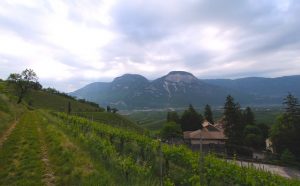 Bordeaux is the world’s largest fine wine producing region, encompassing nearly 300,000 acres, 60 individual appellations, and more than 7,300 châteaux. The Bordeaux appellations of Margaux, Pauillac, Saint Julien, Saint Émilion, and Pomerol are legendary, as are the scores of age-worthy collectible red wines that flow from those Bordeaux communes’ hallowed vineyards.
Bordeaux is the world’s largest fine wine producing region, encompassing nearly 300,000 acres, 60 individual appellations, and more than 7,300 châteaux. The Bordeaux appellations of Margaux, Pauillac, Saint Julien, Saint Émilion, and Pomerol are legendary, as are the scores of age-worthy collectible red wines that flow from those Bordeaux communes’ hallowed vineyards.
Both the red and white wines of Bordeaux (both the region and its wines are referred to as Bordeaux) are some of the finest and most expensive wines on earth. Moreover, this renowned viticultural region has become synonymous with full-bodied red wine. Bordeaux is also the traditional home of Cabernet Sauvignon, Merlot, and Cabernet Franc, the three musketeers of almost all red Bordeaux and the basis for Meritage blends around the world. And what eludes many wine consumers is that Bordeaux is also one of the planet’s largest and greatest sources of white wine, principally from Sauvignon Blanc and Semillon.
Bordeaux, meaning beside the waters, refers to the region’s proximity to the Atlantic Ocean and the broad estuary, the Gironde, for which the entire viticultural department (the equivalent of a county or state in the United States) is named. Bordeaux, the region as well as the department’s leading city, lie at the center of the confluence of the Dordogne and Garonne Rivers, which flow into the Gironde and nearby Atlantic Ocean, which redoubles Bordeaux’s effort to live up to its name. It is Bordeaux’s proximity to the sea that provides moderate climate, which is favorable to the production of fine wine. Bordeaux’s marriage to the sea has also provided the historical highway by which Bordeaux wines have traveled the world, gaining esteem and recognition long before most other landlocked wine regions could safely transport their wines overland to eager markets.
Since the first century BCE, when the Romans established themselves in Bordeaux and referred to the area as Biturigiaca, this ancient viticultural paradise has been a constant source of fine wine. Known to the emperors of Rome, popes, and poets (most notably Pliny and Ausonius), Bordeaux has enjoyed the envy of the wine producing world longer than any other wine region on earth. From Pliny to the most contemporary wine critics, including Robert Parker Jr., Bordeaux wines have never gone out of favor. And with a string of outstanding vintages (2015-2020), the wines of Bordeaux have never been better. Moreover, few other wine regions can claim three millennia of continuous production and millions of satisfied customers.
Exceptional Red and White Portuguese Wines: Still in Need of Discovery
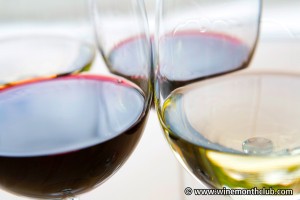 Despite centuries of producing some of the world’s most sought after wines, most notably Port and Madeira, the trove of excellent unfortified Portuguese red and white wines remains relatively undiscovered on this side of the Atlantic. True, Portuguese rosés enjoyed a good run in the late 1960s and 1970s, and the present penchant for Vinho Verde seems to have established some credibility as a fun summertime wine, but neither rosé nor Vinho Verde truly represent the breadth of fine red and white Portuguese wines. Affordable, food friendly, and full of flavor, there is much to discover in this new age of oenological exploration, beginning in the north of Portugal in the valley of the Douro and extending south to Dão, Alentejo, Lisboa, and the Algarve. All produce many contemporary and traditional red and white wines of quality and individuality.
Despite centuries of producing some of the world’s most sought after wines, most notably Port and Madeira, the trove of excellent unfortified Portuguese red and white wines remains relatively undiscovered on this side of the Atlantic. True, Portuguese rosés enjoyed a good run in the late 1960s and 1970s, and the present penchant for Vinho Verde seems to have established some credibility as a fun summertime wine, but neither rosé nor Vinho Verde truly represent the breadth of fine red and white Portuguese wines. Affordable, food friendly, and full of flavor, there is much to discover in this new age of oenological exploration, beginning in the north of Portugal in the valley of the Douro and extending south to Dão, Alentejo, Lisboa, and the Algarve. All produce many contemporary and traditional red and white wines of quality and individuality.
The Douro may be best known for producing Port, but fine unfortified reds and elegant world-class white wines also emanate from the Douro. Quinta do Noval and Quinta Nova de Nossa Senhora do Carmo are two splendid Port producers who also make superb unfortified red and white wines. Quinta Nova’s Pomares line are especially gratifying and provide worthy companions to any well prepared meal. Val Moreira is another exceptional Douro property and winery.
Moving south one discovers a plethora of small estates in Portugal’s Dão that continue to push the envelope in terms of quality and style with traditional Portuguese grape varieties: Touriga Nacional, Touriga Franca, Jaen, and Encruzado to name a few. Taboadella’s red wines are smooth and flavorful, while the estate’s Encruzado Reserva is a white wine that is every bit the equal of fine white Burgundy. Owned by the Amorim family who gained fame as cork purveyors, Taboadella is an ancient property that has emerged as a cutting edge producer in all respects.
The wine country around Lisbon is enjoying a renaissance, too, with such purveyors as San Sebastião turning out a wealth of tasty and affordable wines from traditional and international grape varieties. Moving further down the Iberian Peninsula, Alentejo, deep in the heart of Portugal and off the beaten tourist track, is home to the highly acclaimed Herdade Aldeia de Cima estate among others. And then there is the Algarve, home to a growing number of little viticultural jewels as well as fabulous beaches, caves, and nightlife. Isn’t it time to discover the splendid wines of sunny Portugal? Enjoy!
Shiraz (shee-raz)
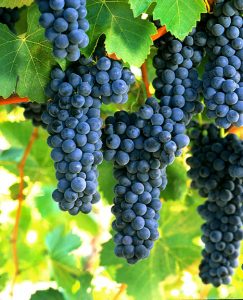 Shiraz is the name given to the Syrah grape in Australia and South Africa and likely a bastardization of either Heraz, a river and region of ancient Persia (present day Iran), or Herat, a former Persian city now in Afghanistan, where Shiraz was once thought to have originated. However, recent DNA testing indicates southern France, always considered to be Syrah’s spiritual home, to be the true origin of the grape. Shiraz/Syrah remains immensely popular in Provence and along the steep banks of the swift-moving Rhône River, where it is responsible in all or part for many of the greatest red wines of France – Hermitage and Châteauneuf-du-Pape specifically.
Shiraz is the name given to the Syrah grape in Australia and South Africa and likely a bastardization of either Heraz, a river and region of ancient Persia (present day Iran), or Herat, a former Persian city now in Afghanistan, where Shiraz was once thought to have originated. However, recent DNA testing indicates southern France, always considered to be Syrah’s spiritual home, to be the true origin of the grape. Shiraz/Syrah remains immensely popular in Provence and along the steep banks of the swift-moving Rhône River, where it is responsible in all or part for many of the greatest red wines of France – Hermitage and Châteauneuf-du-Pape specifically.
Most of the Shiraz vines planted in Australia, where Shiraz is one of the most planted red wine grapes, trace their ancestry back to France, though some evidence suggests that Syrah arrived in Australia from France via South Africa. Such a circuitous route points to the likelihood that the dark skinned Syrah grape variety departed France before the twin plagues of oidium and phylloxera that occurred in the last half of the 19th century and that the Syrah vines that arrived in Australia stem from older clones of the varietal than those found presently throughout most of southern France and California. Furthermore, as France recovered from the devastation, new clones of old favorite grape varieties such as Syrah were often replanted in the vineyards. For these reasons some consider Shiraz to be a distinct clone of the Syrah varietal and entitled to its own name. However, for all intents and purposes, the two names and grapes are synonymous.
Both Australia and South Africa produce many of the planet’s greatest Shiraz wines. Tried and true Australian and South African purveyors such as Chapel Hill, DeMorgenzon, Nugan, Penfolds, Reyneke, Tait, and others continuously fashion world-class Shiraz and at prices many of us can still afford.
Summertime Wines
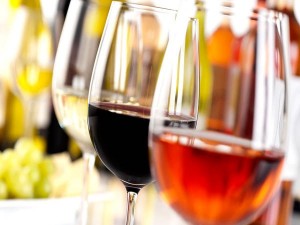 “What’s a great summertime wine”? The answer really depends on many factors, but in an ideal world it would be the wine in your glass and mine. That’s at least the way it should be, but how to find the best summertime wines rests on personal preference, accompaniments, companions, and of course the temperature at which the wine is consumed, to mention just a few variables.
“What’s a great summertime wine”? The answer really depends on many factors, but in an ideal world it would be the wine in your glass and mine. That’s at least the way it should be, but how to find the best summertime wines rests on personal preference, accompaniments, companions, and of course the temperature at which the wine is consumed, to mention just a few variables.
For summertime wines, white wine and rosé come to most people’s minds by default, with Chardonnay still front and center simply because it remains the planet’s most ubiquitous white varietal, but there are so many other great summertime wines from which to choose. Sauvignon Blanc with its crisp herbal edge and refreshing acidity gets two thumbs up, and there is a lot more to Sauvignon Blanc than New Zealand’s grapefruit bombs. Chile and South Africa turn out splendid Sauvignon Blancs in a myriad of styles. France, the home of Sauvignon Blanc, also fashions wonderful white wines. Sancerre and the Loire Valley are notable for their Sauvignon Blancs, while Bordeaux offers a dizzying array of pleasurable summertime drinking with white wines, from 100% Sauvignon Blanc to blends containing Semillon, Sauvignon Blanc, Sauvignon Gris and Muscadelle. Chenin Blanc also deserves serious consideration as a summertime favorite. Vouvray Sec, the quintessential dry Chenin Blanc from France’s Loire Valley, makes a wonderful warm weather companion. Racauderie Gautier and Vigneau-Chevreau are two reliable high quality Vouvray producers, though South Africa also fashions first rate Chenin Blanc. All are delicious with a moderate chill.
Increasingly, my go to summertime wines include beautiful crisp Italian white wines such as the 3 V’s: Verdicchio, Vermentino, and Vernaccia di San Gimignano. Colpaola’s Verdicchio di Matelica, Le Colonne’s Vermentino Costa Toscana, and Fontaleoni’s Vernaccia di San Gimignano will all be in my glass this summer because there is no smoke and mirrors, only fresh natural flavors that quench the thirst, please the palate, and refresh the soul. And what would summer be like without an invigorating glass of Provençal rosé? Not a very good summer at all I think, so I will pour myself a glass of the 2021 Le Provençal Cotes de Provence Rosé while I fire up the grill. It will then be time to open a good red, cooled to about 60° F. California Zinfandel, Italian Primitivo, and a host of Mediterranean reds, cooled to 58-60° F, also make great summertime wines with almost anything that comes from the grill. Sequum’s Napa Valley Zinfandel from California and Masserie Pizari’s Salento Rosso Primitivo from Southern Italy will certainly be on my summertime wine list. What’s on your summertime wine list? Enjoy!
Mencia: Spain’s Ancient and Illustrious Red Varietal
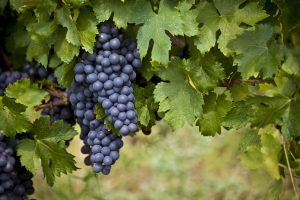 Spain has long been associated with great red wines, particularly the red wines of Rioja and Ribera del Duero from the iconic Tempranillo varietal, so much that other equally exciting indigenous varietals such as Garnacha, Prieto Picudo and most especially Mencia have had to take a back seat or, worse, have been ignored until the last several years.
Spain has long been associated with great red wines, particularly the red wines of Rioja and Ribera del Duero from the iconic Tempranillo varietal, so much that other equally exciting indigenous varietals such as Garnacha, Prieto Picudo and most especially Mencia have had to take a back seat or, worse, have been ignored until the last several years.
Mencia is a premium red Spanish grape varietal found primarily in the Bierzo, Ribeira Sacra, and Valdeorras appellations of northern Spain. Although the Mencia varietal was once considered by enologists to be the direct ancestor and precursor of Cabernet Franc, recent DNA testing has shown that this is not the case. Mencia and Cabernet Franc share some common characteristics, but not the same ancestry. It is now widely believed that Mencia and Portugal’s Jaen de Dão (Jaen for short) grape variety are one and the same, yet not everyone agrees. What we do know, however, is that Mencia is an ancient varietal that has been around for millennia. Bierzo’s original plantings of Mencia likely date to the earliest Roman settlers in Bierzo, who cultivated the varietal two thousand years ago in what remains one of Europe’s most isolated wine regions. It is the grape’s isolation and not any inferior quality that has caused it to be overlooked outside its ancestral home.
Bierzo, Ribeira Sacra, and Valdeorras are remote areas, the latter two in Galicia, Spain’s cool, windswept province astride the Atlantic. Certainly, it is the very isolation of the region that has allowed Mencia to survive and even thrive. Moreover, the average age of the hillside vines in these appellations can be quite old, which lends itself to the production of high quality wines. Consequently, the wonderfully fruity, spicy, and wholly intriguing Mencia varietal has recently been discovered, or rather re-discovered, by modern legions of wine drinkers. They are no doubt intrigued by this unique viticultural entity we call Mencia, whose many attributes are accentuated by organic farming, low vineyard yields, and modern winemaking techniques practiced by its finest purveyors whose emphasis is on quality rather than quantity. Since the 1990s Mencia has steadily grown in popularity to the point where there are now more than 20,000 acres of Mencia vines being cultivated in Spain. Altos de Losada, Peza do Rei, and Casal Novo are three consistent producers of Mencia whose wines are always worth seeking out.
Carmenère: Chile’s Emblematic Wine and the World’s Best Red Wine Value
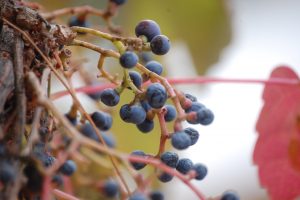 Carmenère is Chile’s emblematic grape variety, yet it rarely receives the recognition it deserves. Of all South American wines, Carmenère clearly stands out as the most distinctive and enjoyable, especially when consumed in the first five years of life, which is when the vast majority of all wines are consumed. Even more impressive, well-made Carmenères age gracefully to perfection for up to a decade or more in bottle. Increasingly, critics and writers sing the praises of Carmenère, especially from top producers such as Casa Silva, Casas del Bosque, Carmen, and Errazuriz, and everytime I serve a Carmenère at a tasting or share it with friends, it’s a hit with red wine drinkers, both young and old. When asked why they don’t drink more Carmenère, the usual retorts still sound something like these: “I didn’t know what it was” or “I never had one before, so I was afraid to try it.” Adam should have exercised a bit more caution when handed the apple, but when it comes to wine, let’s be a little more adventuresome, even audacious!
Carmenère is Chile’s emblematic grape variety, yet it rarely receives the recognition it deserves. Of all South American wines, Carmenère clearly stands out as the most distinctive and enjoyable, especially when consumed in the first five years of life, which is when the vast majority of all wines are consumed. Even more impressive, well-made Carmenères age gracefully to perfection for up to a decade or more in bottle. Increasingly, critics and writers sing the praises of Carmenère, especially from top producers such as Casa Silva, Casas del Bosque, Carmen, and Errazuriz, and everytime I serve a Carmenère at a tasting or share it with friends, it’s a hit with red wine drinkers, both young and old. When asked why they don’t drink more Carmenère, the usual retorts still sound something like these: “I didn’t know what it was” or “I never had one before, so I was afraid to try it.” Adam should have exercised a bit more caution when handed the apple, but when it comes to wine, let’s be a little more adventuresome, even audacious!
So why hasn’t Carmenère taken the wine world by storm? For one, Carmenère is close to being the missing link of Bordeaux varietals, and it has only been since the 1980’s that DNA testing ascertained that Chile’s distinctive red grape is indeed Carmenère. Carmenère’s origins go back many centuries, and it is still one of the six legal red Bordeaux grape varietals for Classified Bordeaux. Carmenère, like Malbec, figured prominently in Bordeaux until the advent of phylloxera in the 19th century. However, post phylloxera, the prolific, earlier ripening Merlot became Bordeaux’s dominant varietal followed by Cabernet Sauvignon and Cabernet Franc. Brought to Chile in the 19th century before the dreaded vine disease, phylloxera, Carmenère was mistaken for a clone of Merlot until the 1980s. This surely accounts for Carmenère languishing for so long in relative obscurity, though it’s hard to believe that one of Bordeaux’s six legal red grape varietals could be misidentified for so long, but then the truth is nearly always stranger than fiction. Political and economic instability in Chile until the 1990’s is another reason Carmenère is a relative late comer to our shores. Lastly, some of the first Carmenère wines sent to the US were under-ripe and not at all indicative of what this premium grape is capable of being.
So, what does Carmenère have going for it? Plenty! Let’s start with Carmenère’s deep purple color, followed by a hedonistic aroma: savory red and black fruit flavors, deft touches of bell pepper, black pepper, dark chocolate, coffee and spice. But best of all, Carmenère’s tannins are smoother than those of Cabernet and its other Bordeaux compatriots. Most of all, people enjoy it, especially after it’s had a few minutes to breathe. The only caveat with Carmenère is this: never judge a Carmenère on first sip. Any good Carmenère needs at least a few minutes of aeration to undergo metamorphosis and blossom in the glass. Yet, one doesn’t have to wait years to enjoy this varietal. Just allow Carmenère a little time in the glass to collect itself, and enjoy!

